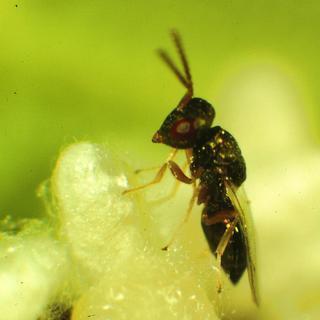WHAT IS AN INSECT PARASITOID?
Cotesia congregata is a parasitoid that attacks certain species of moths in the family Sphingidae. It is a host of numerous hyperparasites, including H. tabacum. The C. congregata cocoons shown in the photograph developed from a Ceratomae catalpae (Lepidoptera: Sphingidae) larva that was feeding on a catalpa tree (Catalpa bignonioides, Bignonaceae) near Athens, Georgia.
Cotesia congregata is termed a gregarious parasitoid because generally more than one individual of it develop from a single host. In contrast, H. tabacum is a solitary parasitoid because only one individual develops from a host.
The interactions described above include four species at different trophic levels: a plant (C. bignonioides), an herbivore (C. catalpae), a parasitoid (C. congregata), and a hyperparasite (H. tabacum). These species each interact with many others to form a complex and rich ecological community. In addition to H. tabacum, for example, there are an estimated 20 species of hyperparasites that attack C. congregata in Georgia.

Hypopteromalus tabacum
Hymenoptera: Pteromalidae
Photograph by John Pickering